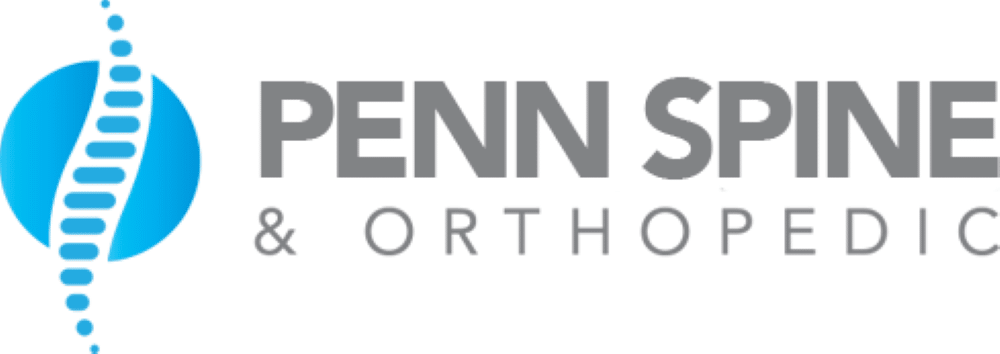In the domain of musculoskeletal discomforts, shoulder blade pain, technically known as scapula pain, is a prevalent issue which affects a substantial range of individuals, from athletes to office workers. This type of pain, marked by symptoms ranging from aching and stiffness to limited mobility, can be a result of a myriad of causes, including muscle strain, rotator cuff disorders, and certain cardiovascular conditions. Appropriate diagnosis and prompt treatment are crucial in managing this condition and warding off further complications. However, the complexity of shoulder anatomy and the diverse causes of the pain often leave patients and practitioners alike pondering: what truly lies at the heart of scapula pain?
Understanding Shoulder Blade Pain
Exploring the intricacies of shoulder blade pain, it is essential to understand that this discomfort can arise from a variety of underlying causes, ranging from simple muscle strain to more severe conditions such as heart disease or gallstones. Shoulder injuries, for instance, can lead to persistent or intermittent pain, often exacerbated by movement or physical activity.
The approach to pain management for shoulder blade pain is largely dependent on identifying the root cause. For example, if the pain originates from a muscle strain, conservative management such as rest, ice, and over-the-counter pain relievers may be sufficient. However, for more severe conditions like heart disease, gallstones, or serious shoulder injuries, the management may involve a combination of medications, physical therapy, or even surgical interventions.
In the context of shoulder injuries specifically, the treatment plan may involve elements such as physiotherapy to regain strength and mobility, and pain management strategies to control pain levels. It is essential for healthcare professionals to provide individualized, patient-centered care, taking into account the patient’s overall health status, pain levels, and personal preferences. Remember, an accurate diagnosis is the first step in effective pain management for shoulder blade pain.
Anatomy of the Shoulder Blade
The anatomy of the shoulder blade, medically termed as scapula, plays a crucial role in the proper functioning of the shoulder joint. It is essential to comprehend the intricate structure of the scapula and its association with surrounding musculature to fully grasp its functions. This knowledge not only aids in understanding the cause of shoulder blade pain, but also provides a basis for effective treatment strategies.
Understanding Shoulder Blade Structure
To thoroughly comprehend the potential causes of shoulder blade pain, one must first explore the complex structure and anatomy of the shoulder blade itself. Known medically as the scapula, this triangular bone has evolved over time to enable a wide range of motion and bear immense loads.
Understanding the shoulder blade’s structure involves considering:
- Scapula Evolution: The transformation of this bone over generations to accommodate bipedal motion and manual dexterity.
- Shoulder Blade Articulation: The connection points with the clavicle and humerus, forming the shoulder girdle.
- Spine of the Scapula: A prominent ridge providing attachment for muscles.
- Acromion and Coracoid Processes: Extensions aiding in muscle attachment and joint formation.
- Subscapular, Supraspinous, and Infraspinous Fossae: Hollow sections on the blade’s anterior and posterior surfaces offering additional muscle attachment points.
Functions of the Shoulder Blade
In evaluating the functionality of the scapula, it is important to recognize its role as a key component in the complex mechanism of the human shoulder. The scapula, also known as the shoulder blade, is primarily responsible for two vital functions: Scapula Mobility and Blade Stabilization. Scapula Mobility refers to the movement of the shoulder blade, which allows for a wide range of motion in the arm. It rotates and tilts to accommodate different arm positions, aiding in actions like lifting or throwing. On the other hand, Blade Stabilization is the scapula’s role in maintaining the structural integrity of the shoulder, providing a firm base for the arm’s movements. This balance between mobility and stability is fundamental for the functioning of the shoulder.
Common Causes of Scapula Pain
Numerous conditions, ranging from simple muscle strain to more serious issues such as heart disease, can lead to pain in the scapula, or shoulder blade. In many cases, scapula pain can be traced back to a handful of common causes.
Consider the following conditions, each of which can produce discomfort in the scapula region:
- Scapula fractures: These injuries, often the result of a direct blow or fall, can produce sharp, severe pain in the shoulder blade area.
- Shoulder instability: This condition, characterized by recurrent dislocations or a sensation of the shoulder giving way, can generate pain around the scapula.
- Brachial neuritis: This nerve condition can cause severe, sudden-onset pain in the shoulder and upper arm, which can radiate to the scapula.
- Rotator cuff disorders: Tears or inflammation in the rotator cuff – a group of muscles and tendons that stabilize the shoulder – can lead to scapula pain.
- Cardiovascular conditions: Certain heart and lung diseases, including heart attack and lung cancer, can manifest as shoulder blade pain.
Understanding these common causes of scapula pain is an important step towards effective diagnosis and treatment.
Recognizing Shoulder Blade Pain Symptoms
Recognizing the symptoms of shoulder blade pain is a fundamental step towards diagnosis and subsequent treatment. This part of our discussion will focus on the key symptoms, from the most common to the less frequent, that might indicate shoulder blade discomfort or health concerns. A detailed understanding of these symptoms can allow for early detection, prompt medical consultation, and possibly prevent further complications.
Identifying Pain Symptoms
Identifying the specific symptoms of shoulder blade pain is essential for accurate diagnosis and effective treatment. Pain management techniques and alternative therapies can help alleviate the discomfort.
The symptoms of shoulder blade pain can vary greatly, but generally include:
- Aching or sharp pain in the shoulder blade area, often worsening with movement.
- Stiffness or limited range of motion in the shoulder joint.
- Radiating pain that spreads to the neck, arm, or chest.
- Swelling or inflammation around the shoulder blade.
- Weakness or numbness in the shoulder or arm.
These symptoms may indicate a number of possible conditions, from muscle strain to more serious issues like a rotator cuff tear or a spine disorder. Proper identification is essential for effective treatment.
Common Shoulder Discomforts
Understanding the common discomforts associated with shoulder blade pain can greatly aid in early detection and timely intervention of potential musculoskeletal issues. Two prevalent causes are rotator cuff issues and shoulder arthritis. Rotator cuff issues often stem from the inflammation or tearing of the tendons in the shoulder region. These issues can lead to sharp, intense pain, particularly during movements that involve lifting or rotating the arm. On the other hand, shoulder arthritis, specifically osteoarthritis, involves the wear and tear of the joint’s cartilage, leading to aching, stiffness, and limited range of motion. Both conditions can manifest as persistent shoulder blade discomfort. Recognizing these common symptoms is essential for early diagnosis and effective treatment.

How to Diagnose Shoulder Blade Pain
In the vital evaluation of shoulder blade pain, a thorough diagnostic approach is paramount, encompassing a detailed patient history, physical examination, and potentially, the use of imaging tests for accurate detection and assessment. Understanding the origin of the pain is pivotal in this process.
A detailed patient history can reveal significant information about the pain origin. This comprises onset, duration, intensity, and triggers. The physical examination, on the other hand, can determine the pain’s location, its effect on the range of motion, and the presence of any associated symptoms.
To further enhance the diagnostic accuracy, the following may be utilized:
- Radiography: Commonly used to detect fractures or dislocations.
- Magnetic Resonance Imaging (MRI): Provides detailed images of soft tissues, hence useful in detecting issues like tendon tears.
- Computed Tomography (CT) scan: Used when bone abnormalities are suspected.
- Ultrasound: Helps in visualizing soft tissues like tendons and muscles.
- Electromyography (EMG): Assesses the health of muscles and the nerves controlling them.
After establishing the diagnosis, a suitable pain management plan is devised, taking into consideration the severity and the patient’s overall health status. This systematic approach aids in delivering effective relief while minimizing potential complications.
Non-Surgical Treatment Options
For patients experiencing shoulder blade pain, a range of non-surgical treatment options are available that aim to alleviate discomfort, restore function, and enhance overall well-being. These non-invasive therapies are often the first line of treatment, particularly for those with mild to moderate pain.
One such treatment is massage therapy, which targets the soft tissues around the shoulder blade area. By manipulating these tissues, massage therapists can help to reduce muscle tension, enhance circulation, and promote healing. This method is widely recognized for its ability to relieve pain and enhance range of motion, making it an effective approach in managing shoulder blade pain.
In addition, acupuncture benefits are also remarkable. This traditional Chinese practice involves inserting thin needles into specific points on the body, which is believed to balance the body’s energy and stimulate healing. Clinical studies have demonstrated acupuncture’s efficacy in relieving various types of pain, including that associated with the shoulder blade.
Surgical Interventions for Severe Pain
When non-surgical treatments fail to alleviate severe shoulder blade pain, surgical interventions may be considered as the next course of action. It is important to comprehend the differing surgical procedures, their associated risks and potential complications. Equally significant is understanding the post-surgery care and recovery process to guarantee ideal healing and pain reduction.
Understanding Surgical Procedures
Venturing into the domain of surgical interventions, it becomes imperative to understand that these procedures are typically considered for severe shoulder blade pain that has proven resistant to conservative treatments. Key considerations include the type of surgery, surgery costs, and insurance coverage.
Consider the following:
- Arthroscopy: A minimally invasive procedure that allows the surgeon to view the shoulder joint and perform necessary repairs.
- Open Surgery: A more traditional procedure that involves a larger incision and a longer recovery period.
- Surgery costs: These can vary widely based on the complexity of the procedure and the necessary post-operative care.
- Insurance coverage: Most health insurance plans cover a portion of the procedure cost but it is important to confirm this prior to surgery.
- Recovery time: This can range from several weeks to several months, depending on the type of surgery performed.
Risks and Complications
While surgical interventions can provide relief from severe shoulder blade pain, it is important to be cognizant of the potential risks and complications associated with these procedures. All surgeries carry inherent risks, including infection, bleeding, and adverse reactions to anesthesia. Shoulder-specific surgeries can, in rare cases, lead to nerve damage, frozen shoulder, or even a reoccurrence of the initial pain. Additionally, the prognosis of complications can vary greatly depending on individual health factors and the overall complexity of the procedure. Pain management strategies post-surgery are essential, as uncontrolled pain may hinder recovery and lead to chronic pain disorders. Therefore, it is essential for healthcare providers to thoroughly discuss these potential risks and complications with patients before proceeding with surgical interventions.
Post-Surgery Care and Recovery
Getting through the recovery period following surgical interventions for severe shoulder blade pain requires a thorough post-operative care plan aimed at promoting healing, managing pain, and restoring functionality. This plan often includes several essential components:
- Post operative nutrition: A balanced diet rich in protein, vitamins, and minerals to support tissue repair and immune function.
- Medication management: Proper use of prescribed pain relievers, muscle relaxants, or antibiotics, if necessary.
- Regular physical therapy exercises to regain shoulder strength and motion.
- Frequent follow-up appointments with your surgeon to monitor recovery progress.
- Emotional support and mental health care, as the recovery process can sometimes be mentally challenging.
Following this plan closely can greatly improve the outcomes of the surgery and hasten the return to normal activities.

Physical Therapy and Exercises for Relief
In the domain of non-surgical treatments, physical therapy and targeted exercises often serve as effective strategies for alleviating shoulder blade pain. Physical therapists often utilize exercise equipment, such as resistance bands, free weights, and stability balls, to enhance strength and flexibility in the shoulder muscles. These exercises, tailored to the patient’s specific condition and pain level, can notably improve mobility and reduce pain over time.
Therapeutic massage, often incorporated into physical therapy programs, is another tool used to relieve shoulder blade pain. The technique focuses on manipulating soft tissues to stimulate blood flow, reduce muscle tension and ultimately alleviate pain. This process aids in the promotion of healing by increasing oxygen supply and nutrients to the affected muscles, reducing inflammation and supporting the body’s natural healing process.
It’s important to note that every individual’s case is different, and the effectiveness of physical therapy and exercises can vary accordingly. While some may find significant relief from these treatments, others may require a more thorough approach, incorporating medication, lifestyle changes, and possibly surgical intervention. As always, patients should consult with their healthcare provider to establish an effective pain management strategy.
Role of Posture in Shoulder Blade Pain
Posture, often an overlooked element in our daily lives, plays a pivotal role in the onset and management of shoulder blade pain. It contributes greatly to the biomechanics of the shoulder girdle and can directly influence the development or exacerbation of shoulder ailments.
Poor posture, such as forward head and rounded shoulders, can lead to muscular imbalances and shoulder blade pain. Chronic slouching or hunching over desks strains the muscles and ligaments around the shoulder blades, often leading to discomfort and pain.
The implementation of posture correction devices and ergonomic workspaces can be highly beneficial. These interventions aim to promote ideal body alignment and prevent undue strain on the shoulder region. Here are some key strategies:
- Utilize posture correction devices like braces or posture correctors.
- Set up ergonomic workspaces with adjustable chairs and desks.
- Regularly perform exercises to strengthen postural muscles.
- Monitor and correct body alignment throughout the day.
- Limit time spent on activities that promote poor posture such as excessive use of smartphones or laptops.
Preventing Shoulder Blade Discomfort
Proactive prevention, marked by an amalgamation of strategic habits and lifestyle modifications, stands as the cornerstone in mitigating the occurrence of shoulder blade discomfort. Key elements in this preventative approach involve regular physical activity, ergonomic adjustments, and a keen focus on stress effects.
Regular physical activity, including targeted exercises that strengthen the shoulder muscles and improve flexibility, can greatly contribute to pain management. Specific exercises can fortify the muscles surrounding the shoulder blade, thus reducing strain and the likelihood of discomfort.
Ergonomic adjustments, particularly for individuals whose work involves prolonged sitting or repetitive arm movements, are also essential. Adjustments such as practicing good posture, using a supportive chair, and taking regular breaks to stretch and move can alleviate the potential for shoulder blade pain.
Lastly, understanding the impact of stress effects is important. Chronic stress can worsen physical discomfort, including shoulder blade pain. Stress management techniques such as deep breathing exercises, yoga, and mindfulness meditation can help to lower the body’s overall stress levels, thereby reducing the risk of musculoskeletal discomfort.
When to Seek Medical Attention
Despite diligent adherence to preventive measures, it is important to recognize when shoulder blade pain necessitates professional medical intervention. Although self-care and pain management techniques can be effective, certain symptoms should not be ignored.
There are specific emergency scenarios where you should seek immediate medical attention:
- Severe shoulder blade pain that doesn’t respond to over-the-counter pain medications or other pain management techniques
- Pain that is accompanied by tightness or pressure in your chest, potentially indicating a heart condition
- Sudden shoulder blade pain that is associated with difficulty breathing or dizziness
- Pain that is persistent, worsening over time, or interrupting sleep
- Shoulder blade pain resulting from a traumatic event, such as a fall or accident
These symptoms may indicate serious underlying conditions such as heart disease, lung conditions, or injuries requiring immediate treatment. Ignoring these warning signs and delaying medical attention could result in further complications. Being aware of when to seek professional medical attention is essential in maintaining good health and preventing potential shoulder blade complications.
Frequently Asked Questions
Can Certain Foods or Drinks Exacerbate Shoulder Blade Pain?
Certain foods and drinks may indeed have a dietary influence on pain aggravation. Highly processed, sugary, or inflammatory foods, for instance, could potentially exacerbate discomfort in susceptible individuals, though further research is required.
Does Weather or Climate Affect Shoulder Blade Discomfort?
Changes in weather or climate may not directly impact musculoskeletal discomfort. However, factors like Exercise Impact and Posture Influence can play a significant role in the experience and management of such discomfort.
Can Emotional Stress Contribute to Shoulder Blade Pain?
Yes, emotional stress can contribute to physical discomfort. Stress management techniques are critical as unmanaged emotional stress can have a profound impact on overall health, including potential musculoskeletal issues.
Are There Alternative Therapies for Shoulder Blade Pain Like Acupuncture or Chiropractic?
Yes, alternative therapies such as acupuncture and chiropractic can be effective pain management techniques for musculoskeletal discomfort. These holistic healing approaches often provide relief and promote overall wellness without relying on pharmaceutical interventions.
Is Shoulder Blade Pain More Common in Certain Age Groups or Genders?
Certain age groups and genders do have a heightened prevalence of such pain, often due to occupational risks and athletic injuries. However, thorough studies to definitively establish this correlation are still in progress.

